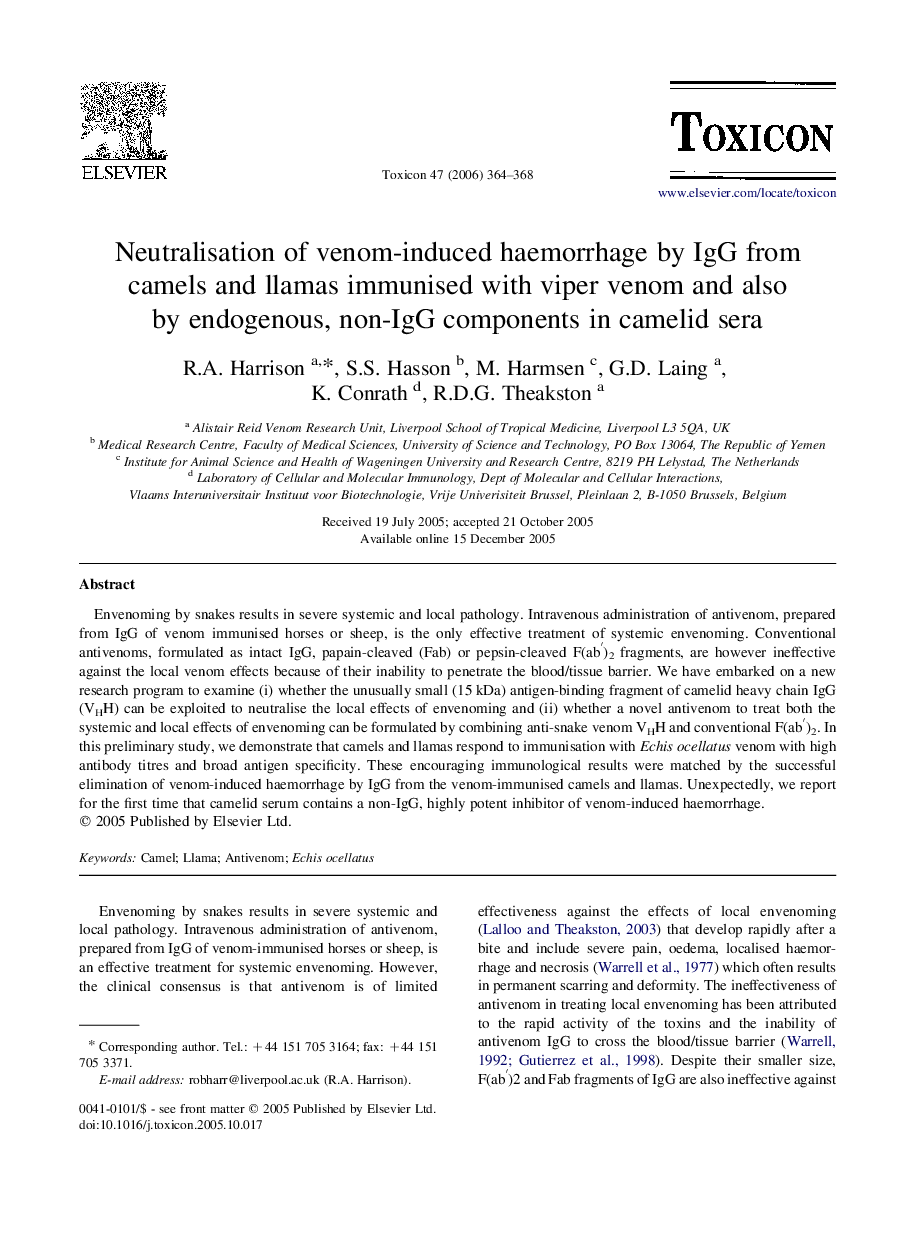| Article ID | Journal | Published Year | Pages | File Type |
|---|---|---|---|---|
| 2065668 | Toxicon | 2006 | 5 Pages |
Envenoming by snakes results in severe systemic and local pathology. Intravenous administration of antivenom, prepared from IgG of venom immunised horses or sheep, is the only effective treatment of systemic envenoming. Conventional antivenoms, formulated as intact IgG, papain-cleaved (Fab) or pepsin-cleaved F(ab′)2 fragments, are however ineffective against the local venom effects because of their inability to penetrate the blood/tissue barrier. We have embarked on a new research program to examine (i) whether the unusually small (15 kDa) antigen-binding fragment of camelid heavy chain IgG (VHH) can be exploited to neutralise the local effects of envenoming and (ii) whether a novel antivenom to treat both the systemic and local effects of envenoming can be formulated by combining anti-snake venom VHH and conventional F(ab′)2. In this preliminary study, we demonstrate that camels and llamas respond to immunisation with Echis ocellatus venom with high antibody titres and broad antigen specificity. These encouraging immunological results were matched by the successful elimination of venom-induced haemorrhage by IgG from the venom-immunised camels and llamas. Unexpectedly, we report for the first time that camelid serum contains a non-IgG, highly potent inhibitor of venom-induced haemorrhage.
